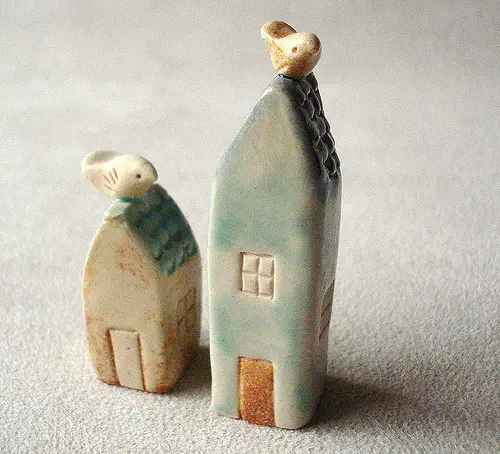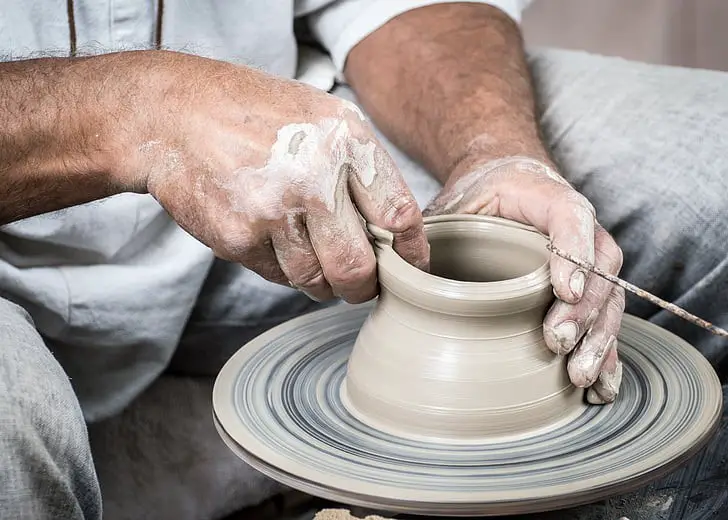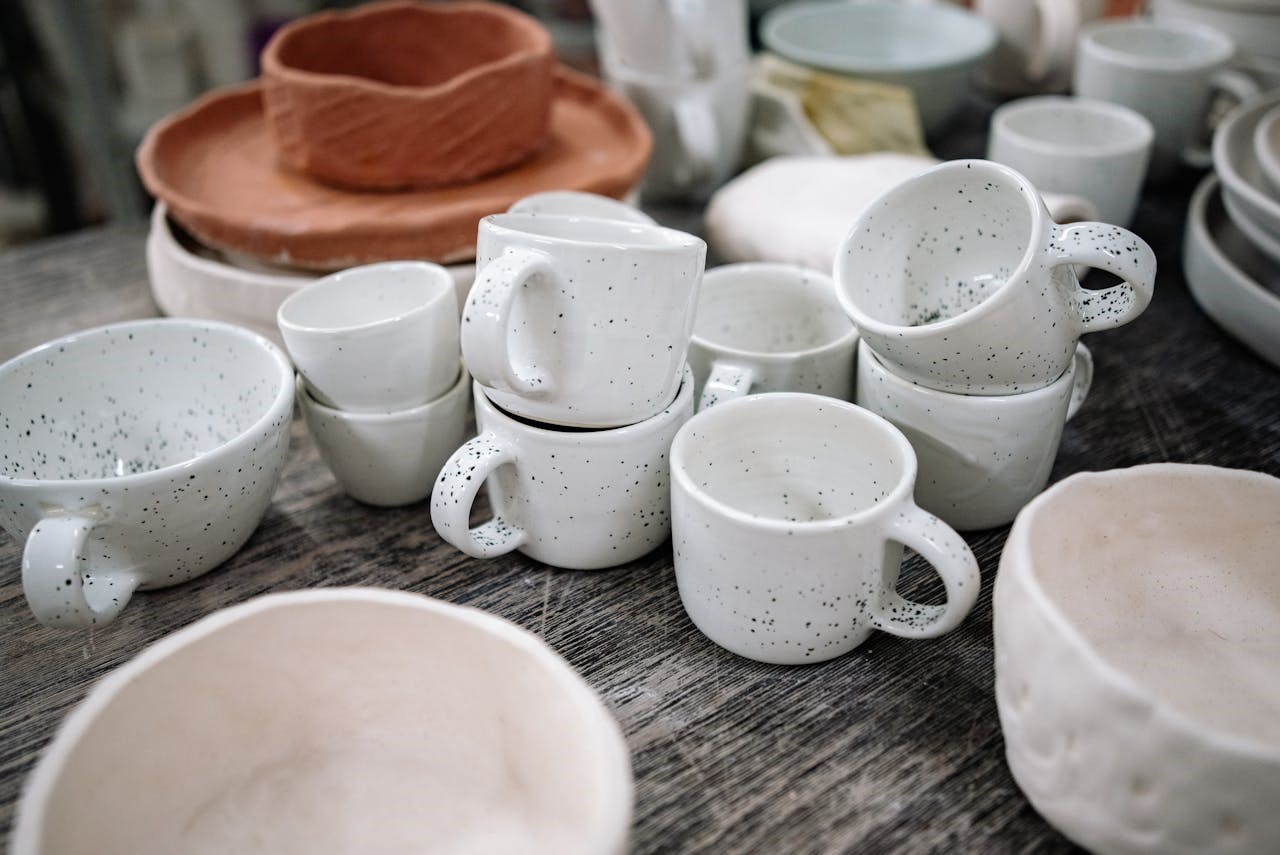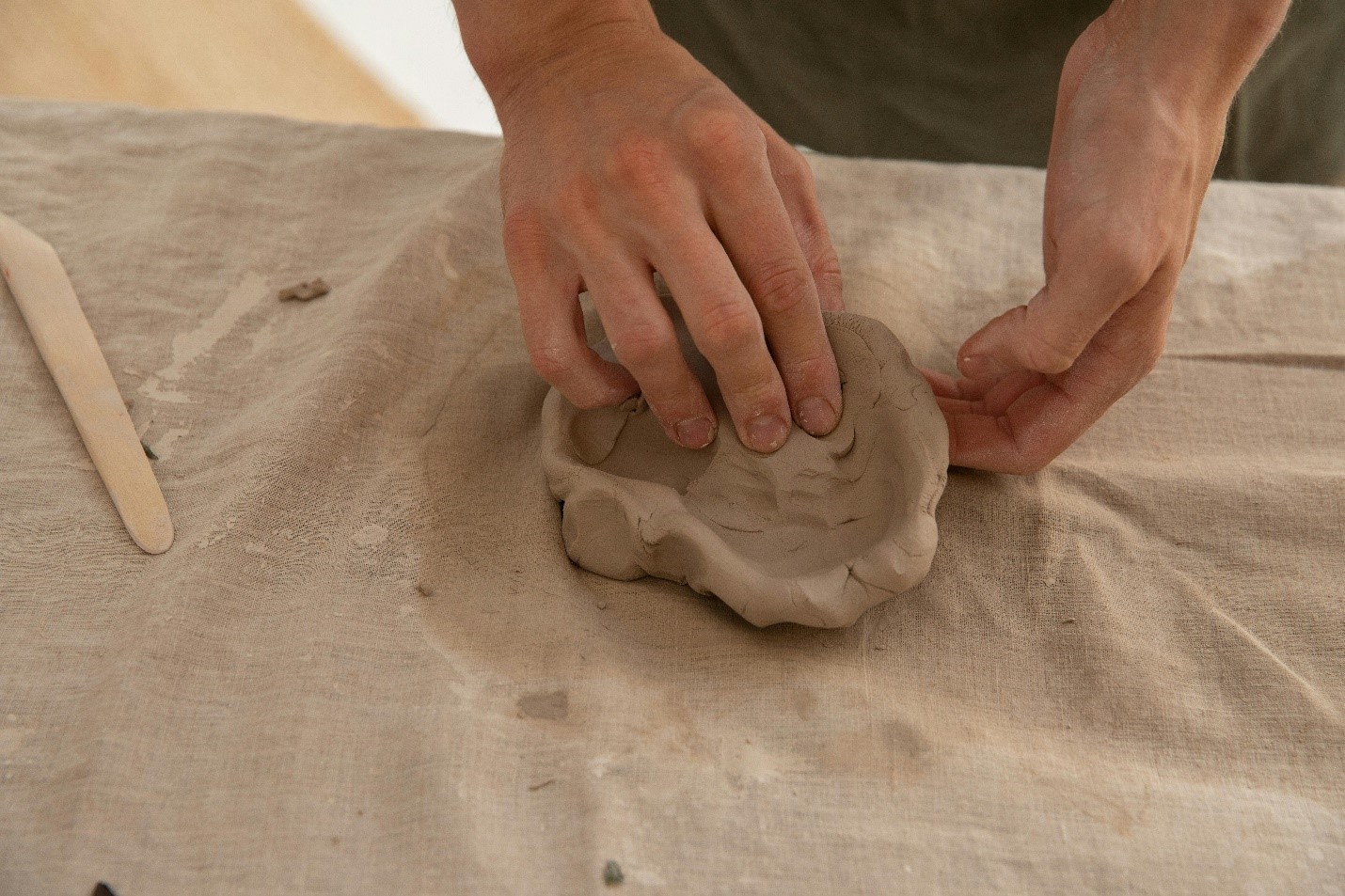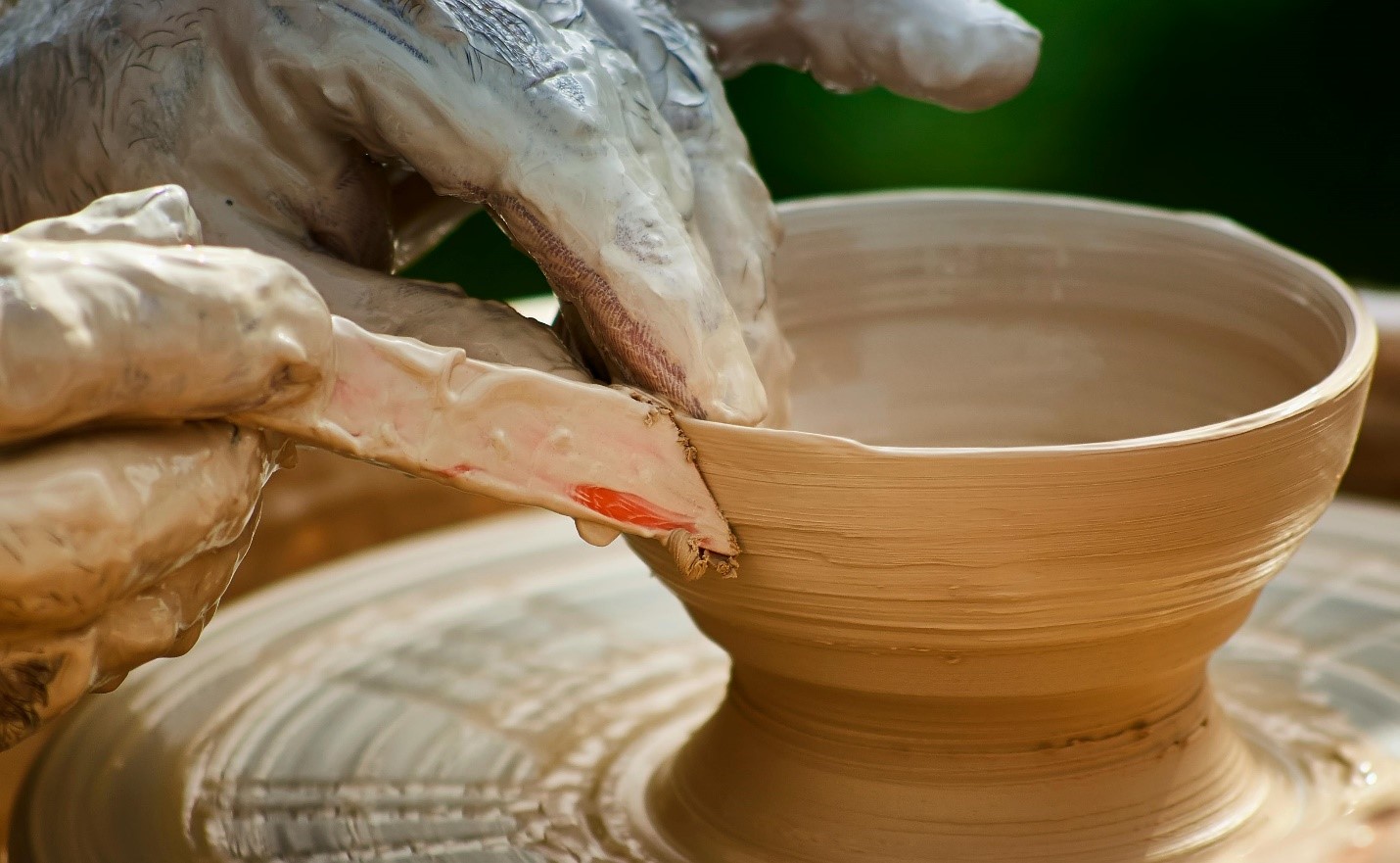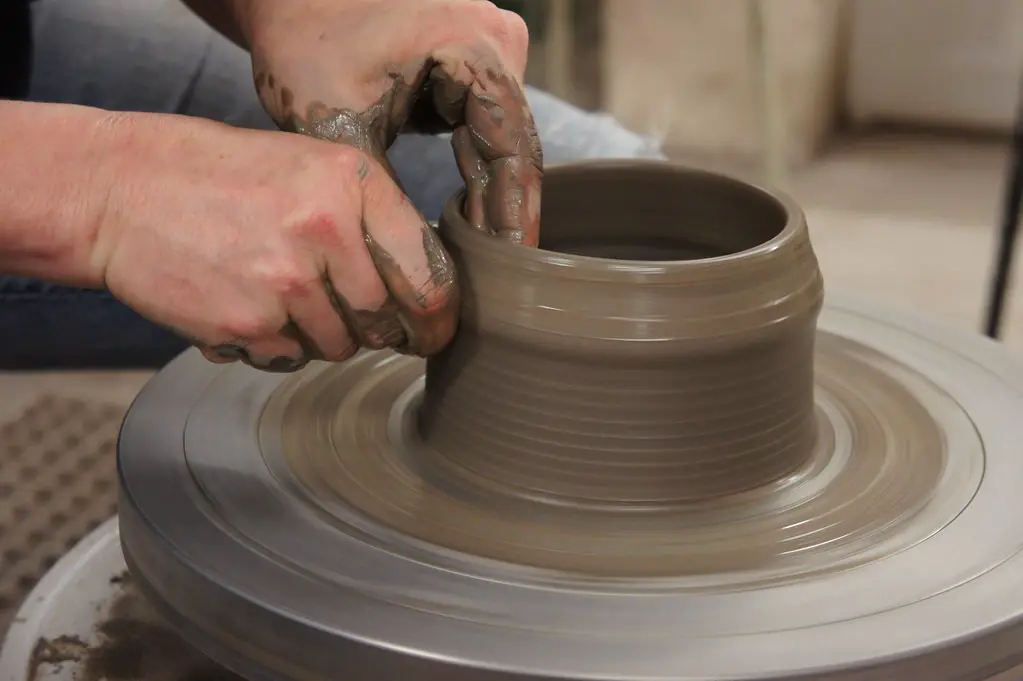Hand-building pottery is a prevalent technique that dates back thousands of years. Its significance and relevance in the art of pottery remains uncompromised. With many older methods still in use and some new ones, hand-building pottery is just as easy to try out as before. If you are particularly interested in trying this craft, this article will help you thoroughly with various techniques and ideas you can try.
Different Types Of Techniques
Hand-building is a great hit amongst people due to the creativity potential it embodies. Wheels are not present in hand-building. Items made with hands are partially symmetrical or round. They are the results of unique ideas and their implementation instead, and thus can take so many shapes that you may not even get with wheel-spun pottery. There is so much you can mold and create with your hands, and you may not even be an adept potterer.
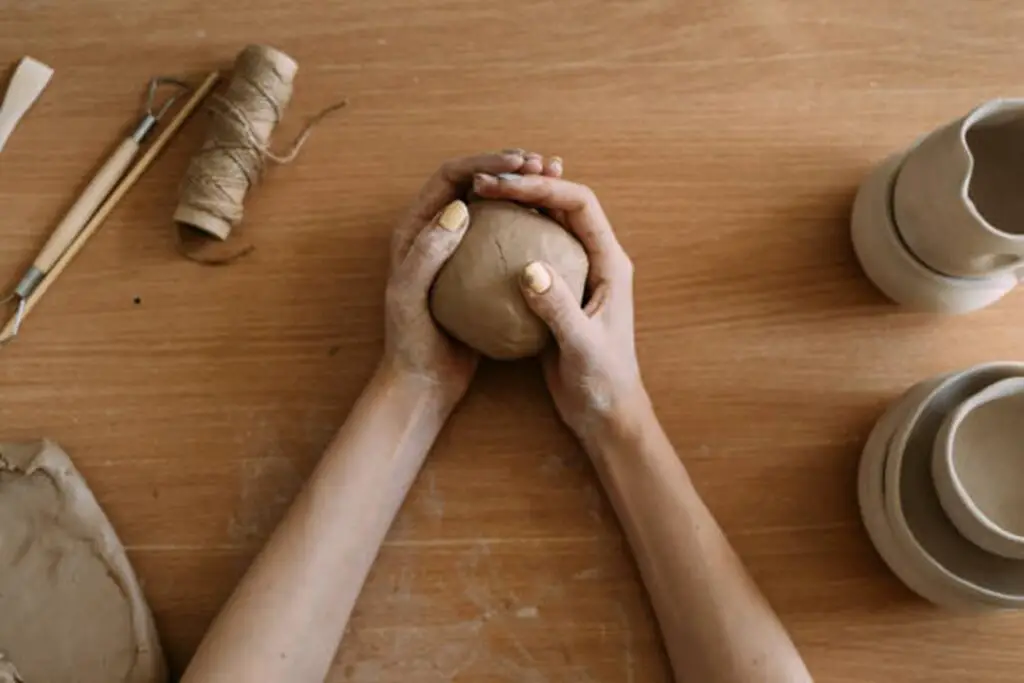
So, here are three main techniques of hand-building pottery that you can use to shape your ideas.
| Techniques | How Does It Work? |
| Pinching | Insert your thumb into the center of the clay and then pinch it Rotate your fingers and thumbs to thin it out Try to be as even as possible to create an organic look |
| Coiling | Use rope-like coils to build the clay in successive corners Move your hands up to create the sculpture |
| Slabbing | Take clay that is formed around molds Start to build on this slowly You can also use a rolling pin to thin this out You can angle these together to build up the sides |
However, you must use the right tools and templates to do many intriguing projects. To do so, you can use the EuTengHao 19 Pcs Pottery Tools. They are made with premium materials and include every piece of equipment you need to implement any of the above-mentioned hand-building pottery techniques.
Hand-Building Pottery Project Ideas
Now, we’ll discuss some astonishing ideas that you can turn into reality. These can get you ornamental pieces that will adorn your house for days. Some of the most creative hand-building ideas are as follows.
- Slab plates
- Huge slab forms
- Ceramic shoe
- Pinch pot animal
- Clay starfish
- Slab vase
But before delving into the project ideas, let’s understand the types of tools you’ll need for each.
Standard Tools Used In Hand-Building Pottery
Hand-building pottery utilizes prominent tools that make the job easier, the cuts smoother, and the overall process hassle-free. So, below, we have enlisted some standard tools you can opt for while hand-building pottery pieces.
| Tools | Uses | Applications In Project |
| Rolling Pin | Spreading and smoothening | Slab plates, ceramic shoes, pinch pot animal |
| Sponge | Damp smoothening | Slab plates, ceramic shoe |
| Knife | Cutting | Slab plates, ceramic shoe, clay starfish |
| Needle Tool | Careful scraping | Slab plates |
| Template | Backboning and supporting | Huge slab forms, clay starfish, slab vase |
| Meter Tool | Measurement | Ceramic shoe |
| Flexible Rib | Shaping | Ceramic shoe |
1. Hand-Building Slab Plates
Slab Plates is a simple idea in hand-building pottery for beginners. Anyone can get started on this if they wish to try this craft. The materials used in this method will not cost you much, so you can remain assured.
Procedure
Slabs are the foundation of slab plates, and a good one, even more so. You need to start practicing beforehand to be good at it. Once you have mastered this, you can have an array of wonderful surfaces that can be glazed, finished, or embellished with stencils. Here are detailed steps to get started with.
- Roll out the slab to the thickness you desire, throwing it first in specific directions and then using a rolling pin or a slab roller to continue this, rolling it out on one side.
- If you are on a canvas, work it till the clay stops stretching.
- Lift the slab to create the most surface area possible, then let it stiffen to the leather hard stage so you can bend it without cracking.
- Grab your plates, then put them upside down as a template to cut, keeping the fettling knife perpendicular to the work surface.
- Take off the excess clay and make the rims smoother.
- Click the finger across the edge with consistent pressure to soften without flattening the edge.
- Take a damp sponge to do this, and then you can sign and stamp your underside.
- Slip the slab, smooth the top edge, and put it into the paper plate to form the plates.
- Press the clay into the paper plate, and then make the design that works.
- Let it dry to leather-hard in the bottom plate, remove to check to see if they are stacked nicely, and look at the rim, shaping as needed.
- Slip decorate the plates as you desire, and you can put this into there to create a bold, graphic set of your choice.
- If you want to add extra pizazz to this, take some clay, roll it out, and then grab some cookie cutters and create shapes using that, from there, putting it on the side.
- Let all of this dry, and then glaze and fire as needed to create a beautiful set of plates.
Slab plates are a great way to go when you are just starting with your hand-building pottery journey. By following these simple steps, you can soon learn your way around the fragility of clay and how it stays put.
2. Creating Huger Slab Forms
Huge Slab Forms Image – To be Kept as It Is
When you follow steps correctly and practice often, you can master slab forms much better. When you are ready to move forward, you can start with larger slab forms, which can help you create things like;
- Vases
- Containers
- Planters
- Little Boxes
- Casserole Dishes
Procedure
The procedure for working on huger slab forms goes like the following.
- Take your clay and roll it out, smoothing each side.
- Take your template, and from there, cut it out into the paper as needed.
- Outline the clay into the template, cut the slab, and measure each template piece.
- Make sure all connection points are put at 45 degrees.
- Avoid the use of slip since it might separate upon drying and firing. Bevel the edges, score them, and use the magic water.
- Use a coil to hold the joints together so that they are squeezed. Use a thin one, put it on the seam, blend, and compress.
- Repeat this with the corners, then smooth and compress each for all sides.
- Measure and mark the bottom, beveling the bottom slab edges. From there, check the firmness, paddle it, and then put a coil on the bottom.
- Paddle the bottom of it, and make sure to paddle each side.
- Cut the strips for the rim, cut the ankles, and then connect them. Put it together, smooth it out, and put a small coil around the bottom edge of it.
- You can then underglaze any shapes that you want on this.
In this case, you must ensure you do not put your work on a high fire right upon completion. Add your underglaze, if any, and let your slab form sit out for a week. After this, it will require a bisque fire. Put it in the kiln after thorough glazing. The starting temperature should be 180 degrees Fahrenheit and increase to 1828 degrees. Only remove the slab form from the kiln once the temperature has dropped below 120 degrees to prevent any cooling cracks.
We are sure you have made a fantastic piece by following the steps. Now, you are well versed in the basics of hand-building pottery and can try your hands at even more complex stuff.
3. Making Ceramic Shoe
Ceramic Shoe Image – To be Kept as It Is
A ceramic shoe is one of the most elegant ceramic forms to try. It is great for gifting to someone who adores little adornments, showpieces, and shoes. It is created with more attention to intricacies than regular pottery pieces but looks lovely enough to make the process worth it.
Procedure
When you carefully read the procedure, you will have a relatively easier time creating a ceramic shoe. You shall begin with designing the shoe you envision on a paper template. Once you are done with this, you can follow the detailed procedure.
- Roll out the clay to an ¼ inch slab, then cut out a shoe shape.
- Miter join the parts to 45 degrees and look at the beveled edges.
- Cut the hole in the middle and then score every part. Slip the edges, and bring it to shape.
- Connect each of these and mold from the heel to the shoe, using a core for solidification.
- Blend and smooth the coil and other areas.
- Since you want a soft rib, propping this with extra height will create the best base. Use a template, cut it to size, score, and attach it, marking the location on the back.
- Slip and score to attach each of these. You can use a small slab for the post of the shell.
- Roll the heel post into shape, attach it to the base, roll it, and then cut it into the height.
- For the toe pieces, connect these, mark the excess clay, and cut it off. Slip and score all of the edges.
- You must ensure that you have a small hole piercing within the heel because it allows the air to escape.
Now, you shall mold the parts and smoothen everything to achieve your desired look. Allow them time to rest before putting them into the kiln. Furthermore, you may add stains, glazing, and patterns to it for a more realistic appearance. It will give you a more decorative shoe when it comes out of the kiln.
Learning to make a ceramic shoe is a great lesson in slab poetry. Even if you are unfamiliar with creating templates, you can try it. This will help you learn to mold complex designs into one singular piece. Many people trying their hands at slab pottery can gain an edge by practicing this style.
4. Creating Pinch Pot Animal
A pinch pot animal is a slightly more complex but cuter form of hand-building pottery. If you like little animals like hedgehogs, raccoons, cats, and more, you will especially enjoy making them come to life through effective molding. These can be made easily in a pot with a bit of pinching. Once you are done, you will have some fantastic miniature animals.
Procedure
Here is how you can get started with a pinch pot animal.
- Take two balls of clay, about ½ a pound each, and of the same size.
- With the ball in your left hand, push your right thumb towards the middle, making it about half an inch thick at the bottom.
- Pinch the clay evenly, starting with the bottom, and rotate it with ¼ inch thickness at the edge.
- Once both are created, score with the pin tool and apply a lot of slip to this pot.
- Join them and slide the back of one thumb over the pot seam to the neck, sealing this and keeping the air trapped. You can always alter it to the right shape by pressing and rolling.
- To make the head, put a smaller pinch pot onto the body with a slip and score.
- Add the appendages, slipping and scoring everything.
- For the spines, roll a small amount of clay in coils, fold it in half, and press into the body, smearing it and smoothening it as you go along.
- Cut a hole near the bottom for the air to leave while you dry and fire, creating a good air passage between each part.
- Dry this slowly and cover the finished work for a long time.
- High fire this once you have everything put together, and ensure you have an appropriate place for the air to escape. Make sure the spines are not fragile.
- Glaze and decorate as needed.
Making pinch pot animals is more enjoyable because it is both profound and aesthetically appealing. You can make the animals you like one by one and see what works for you.
5. Hand-Building Clay Starfish
The next hand-building pottery project is simple but equally fun. If you create something, say a box, for someone, you can add this clay starfish adornment to make it more appealing. You need fewer items to make this and can showcase your exceptional skills with detailing.
Procedure
The procedure of creating a clay starfish goes as follows.
- First, roll out the clay, smoothening and compressing it, and use your template for the clay slabs.
- From there, cut out the starfish pattern and then put a lump of clay over a mold, pushing it into shape and defining the arms.
- Remove, do this with the second one, and from there, you can attach them.
- You attach by scoring all of the points of contact, slipping this, and then attaching each half, connecting and pinching the parts.
- Blend this, make a coil, flatten it, and put it around every contact point.
- From here, add coil as needed, blending this, then smoothing and using a sponge to refine the shape.
- When completed, create the arm extensions, score them, and make a hole for the release.
- Connect every single extension, blend, and add a coil. Blend and shape every single arm into a coiled shape.
- Add more definition, improve the texture, and attach the bottom feet.
If you do not already have a box to put it on, you can use molds and templates to make one from scratch. Consider additional designs like seashells to create a perfectly aesthetic box. You can slip the starfish you made on the lid of a box, put it somewhere else, or leave it as it is!
6. Developing Slab Vase
The slab vase is the last project you can try on this list. It is great to mold vases or similar items without engaging in wheel pottery. This hand-building pottery will allow you to exercise patience and discipline, giving you great results.
Procedure
Follow this procedure to make a slab vase from scratch.
- First, use the template to cut each slab to size.
- Smooth this out with a red rib, and then use a round hump model, pushing and turning on this. Do this with a smaller mold, creating a deeper shape and smoothing the edges.
- Get a miter to smooth the edges, and from there, score and slip everything that is mitered from there, and roll over the rolling pin for an extra little shape.
- Take your stand slab; from there, attach this, blending in the seam with scoring and slipping.
- Add the coil to keep it strong, blending it inside and outside.
- From here, smooth each edge to create the correct size, put the top of the vase above it, and give it a fit check.
- Slip and score the two areas, move them together to attach, and then add a coil to blend this in. At this point, you will notice that it is in a super smooth shape.
- From here, blend the inside seam and then adjust the shape of this. It is the stage where you can make improvements, if any.
- Cut an opening at the top, and from there, with a very narrow slab going out, create the rim. You can use the slip-and-score method to attach all of this.
- For the bottom, create a thin piece of slab clay, cut it to shape, and then slip and score the bottom, score, and then attach or something based on a template that you slip and score onto the final piece.
The vase is a much larger object, so it will need time to rest in the air before it goes into the kiln. Keep it covered under a shed and avoid exposure to strong sunlight while it sits in the open. Make sure there is a hole at the bottom of the vase to keep it ventilated. Otherwise, it is likely to crack from the cooling, which can cause sudden breakage and even ruin the project. The hole has to be no bigger than a thick needle; it is only for air to pass through with ease. To have a more defined look, you can glaze, stain, and decorate the vase before putting it in the drying stage or the kiln.
Must-Have Hand-Building Templates
Before you try any of the above-mentioned or other complex hand-building pottery projects, you must ensure you have proper templates. Here are some benefits of templates that you cannot overlook.
- Less stress on how to put it together
- Easier assembly
- Accurate measurements
Whenever you feel like you are facing issues with the sizing and molding of your pieces or cannot have an accurate idea, consider putting together a template and, from there, add it to the pieces as needed. It makes hand-building pottery much easier to practice. An additional tool like the ORIISIN ClayTools complements your templates to provide a closer, smoother finish. The shapes are expertly cut to provide accurate measures and results.
| Types Of Templates | Application Potential |
| Pre-Made Template | This type of template is made for various purposes. It can adapt to multiple uses in one project or more. It is usually made for objects of the same size. |
| Measured Template | It is a customized template made for each kind of project upon careful measurement and requirements. |
Conclusion
You are now all ready to start with your first hand-building pottery project. The projects mentioned above start simple but become more complex so you can master the basics effectively. This guidance will enable you to try even better projects in the future, possibly with greater ease! Hand-building pottery is an impressive realm that you must explore if pottery intrigues you in general. Always remember that practice and patience will make you better in this art!

